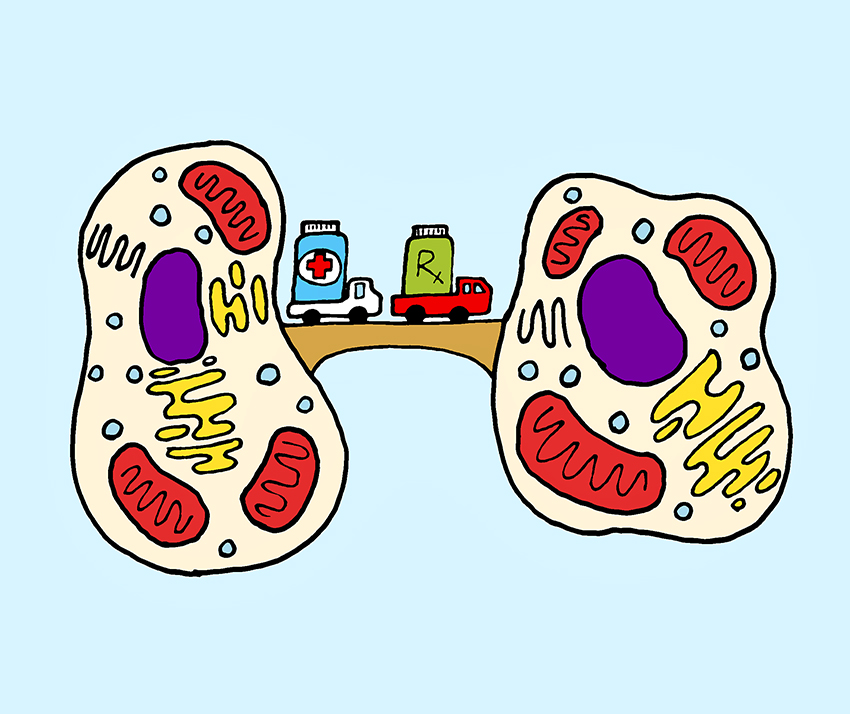“Connectosomes,” a new type of nanoparticle developed by UT researchers, may be capable of delivering medicine more efficiently to individual cells.
Avinash Gadok, biomedical engineering graduate student, and Silvia Ferrati, a Ph.D. candidate in the same field, recently worked together to create these nanoparticles, which can deliver chemotherapy drugs directly to cells, reducing the side effects of typical chemotherapy methods.
“It’s like opening a tiny doorway into the tumor cells, so the chemotherapy is able to go directly into that cell,” Gadok said.
Gadok said connectosomes reduce the side effects of chemotherapy because they only target tumorous cells. Therefore the patient’s whole body is not subject to the harshness of chemotherapy drugs.
“[Connectosomes] are a type of nanoparticle that contain gap junction proteins on the cell surface,” Gadok said. ”These proteins allow the connectosomes to dock with tumor cells, form a junction and send the medicine into the cell.”
Gadok said gap junctions are a fairly common trait across all types of cells, making them a good choice to deliver medicine to tumor cells. The junctions can connect the nanoparticle to neighboring cells, which allows molecules to travel from the cell to the nanoparticle more easily.
“Something interesting about the way we make our connectosomes is that they are made from cells, unlike other people who make [nanoparticles for drug delivery] synthetically from silica or other materials,” Gadok said.
Gadok said nanoparticles come in numerous forms, and of the portion that are used for cancer treatment, the ones she has developed are most efficient because they utilize gap junctions. According to Gadok, conventional nanoparticles do not have gap junctions, which is what allows connectosomes to interact directly with the inside of target cells, making them more effective.
Other chemotherapy methods sometimes result in endocytosis, in which the drug is engulfed by the cell and must leak slowly out into the cytoplasm in larger doses in order to work. Gadok said connectosomes are more efficient because they are able to open a door into the cell and deliver the drug directly.
Gadok said that creating the connectosomes from living cells creates some obstacles for mass production.
“One challenge if this were to become a treatment for lots of people would be making enough of them, because we have to derive them from other cells and we need a lot of the source cell,” Gadok said.
Ferrati said one limitation for the use of connectosomes is when target cells have low levels of connexin, a key assembly of proteins that allows for the formation of gap junctions. Without adequate connexin, the cells cannot form tight gap junctions, making it difficult to deliver the medicine.
Connectosomes are not widely used yet because the researchers still need to patent the technology, conduct clinical trials and receive FDA approval before they become a legal method for chemotherapy.
“Any little step forward in cancer research is a great success,” Ferrati said. “We are excited about the results and looking forward to the next steps.”















